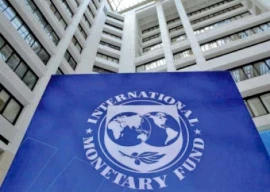In India’s case, the real danger arises from treating the factors determining our bilateral relations as static. Worse still, one oversimplification about an extremely complex relationship is confronted with another massive oversimplification. In one view, India is an implacable enemy still obsessed with the partition of 1947. This view is beginning to be countered with the assertion that India has never been an enemy and that all conflicts with India were engineered by a militaristic cabal in Pakistan. Both these views represent an escape from reality and a threat to the gravitas with which Pakistan’s policy towards India should be formulated. It is a dynamic situation where internal factors in the two countries and the ever changing external environment constantly shape the nature of the conflict, the agenda of the two countries and the possible outcome. One event, General Musharraf’s folly — otherwise known as the Kargil conflict — more than any other single factor contributed to the US-led international community’s strategic move to support India. Similarly, India was able to feed the terrorist assault on Mumbai into the mighty propaganda machine supporting the wars against al Qaeda, terrorism and extremism with such dexterity that the fate of the people of Kashmir is all but forgotten. The synergy that India created on terrorism enabled it to stake a claim in Afghanistan — which is militated again by geography.
Indian Prime Minister Manmohan Singh’s observations on Pakistan, Kashmir and Afghanistan, during his interaction with some senior editors in New Delhi on June 29, reflect the Indian perception of the changing dynamics of the India-Pakistan equation. Coming so soon after an amicable meeting of the foreign secretaries, he has used a surprisingly tough tone. On a second thought, he was simply reminding Pakistan of the changed context in which India was conducting the resumed dialogue with it. Instead of taking umbrage, Pakistan may well accept it as a challenge to modify the factors implicit in his comments.
By no means a hero to millions of his fellow countrymen, Manmohan Singh has, nevertheless, made a huge contribution to the transformation of India. Admittedly, there were compelling reasons why the West wanted to enlist New Delhi in its strategic calculus but this process of co-optation would not have begun if India had not demonstrated its democratic and economic success to the world. Tragically, during the same period, Pakistan continued to decline in every sense of the word. After three years of an elected government, Pakistan may manage a GDP growth rate of 2.3 per cent in 2011 that, in a somewhat optimistic scenario, may rise to 3.7 per cent by 2015. Despite corruption, that was a principal theme of Singh’s interaction with the editors, India is governed well. In Pakistan, mis-governance is globally attributed to the present government deliberately fostering corruption and cronyism.
Notable amongst the other points that Manmohan Singh made were that Pakistan should forget about Kashmir and tend to its own internal dilemmas and his advice to US President Barack Obama was not to quit Afghanistan in haste. In a total reversal of its post-independence history, New Delhi seems to be inclined to accept a permanent and kinetic American military presence there. These and other related issues need an exhaustive public debate in and out of parliament. There is a touch of ad hocism in the working of our foreign office in the absence of a comprehensive foreign and security policy, with public diplomacy its weakest link. A sustained public interest in it may help concentrate the wandering mind of the government.
Published in The Express Tribune, July 4th, 2011.
1731583017-0/diddy-(42)1731583017-0-405x300.webp)


1719315628-0/BeFunky-collage-(8)1719315628-0-165x106.webp)


1731829111-0/Copy-of-Untitled-(8)1731829111-0-270x192.webp)



1731825692-0/Express-Tribune-(1)1731825692-0-270x192.webp)






COMMENTS (17)
Comments are moderated and generally will be posted if they are on-topic and not abusive.
For more information, please see our Comments FAQ